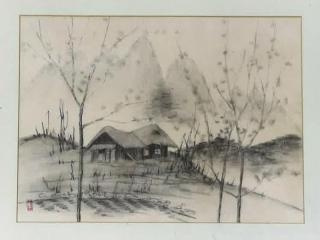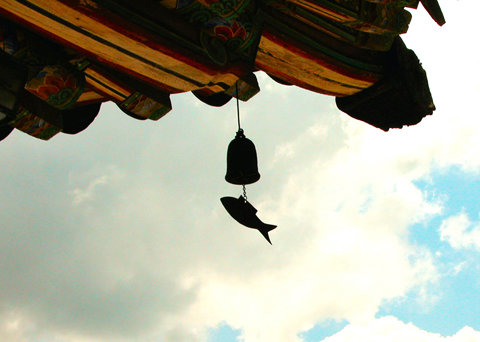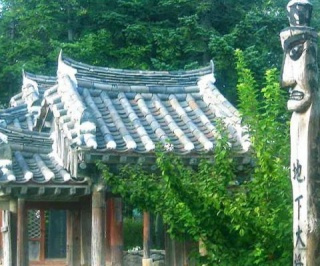Koreann Thatch-roofed House in the Country, Artist Unidentified From TYKCollection |
Wind-bell: 청계사 대웅전의 풍경 “한국 전통건축장식의 비밀” 허균, 대원사 Buddhist Temple Chunggyesa, Daewoongjun Hall “The Secret of Traditional Korean ConstructionOrnaments” by Huh Kyun, Daewonsa, Korea | Sunangdang: A Village Shrine and a Tutelary Wooden Deity |
NOVEL
Nayoung’s Journey
Written by © Therese Young Kim
(The story of a young Korean woman’s courageous journey to reclaim her lost American dream.)
Introduction
Partly based on true events, “Nayoung’s Journey” is a provocative tale of a courageous young Korean woman embarking on her fateful journey with love and trauma to reclaim the American dream she lost as the victim of a shocking crime.
Set against the backdrop of late 1960s Seoul, Hamburg, and New York City, and old world Korea, the story shines a glaring light on the magical yet tragic world of American dream, told in ways never written before.
From the protagonist’s tangled emotional landscape, at times colorful and mysterious, Nayoung speaks to and for the brave women of all cultures, who endure prejudice and injustice they face while persevering to find their places in the free world, with daunting courage, resilience, and hope.
Therese Young Kim, who lived in old-world Korea before living in new-age America with equal passion, reveals in “Nayoung’s Journey” the paradox and irony of the American Dream, with biting honesty in her unique voice.
All Rights Reserved © Therese Young Kim
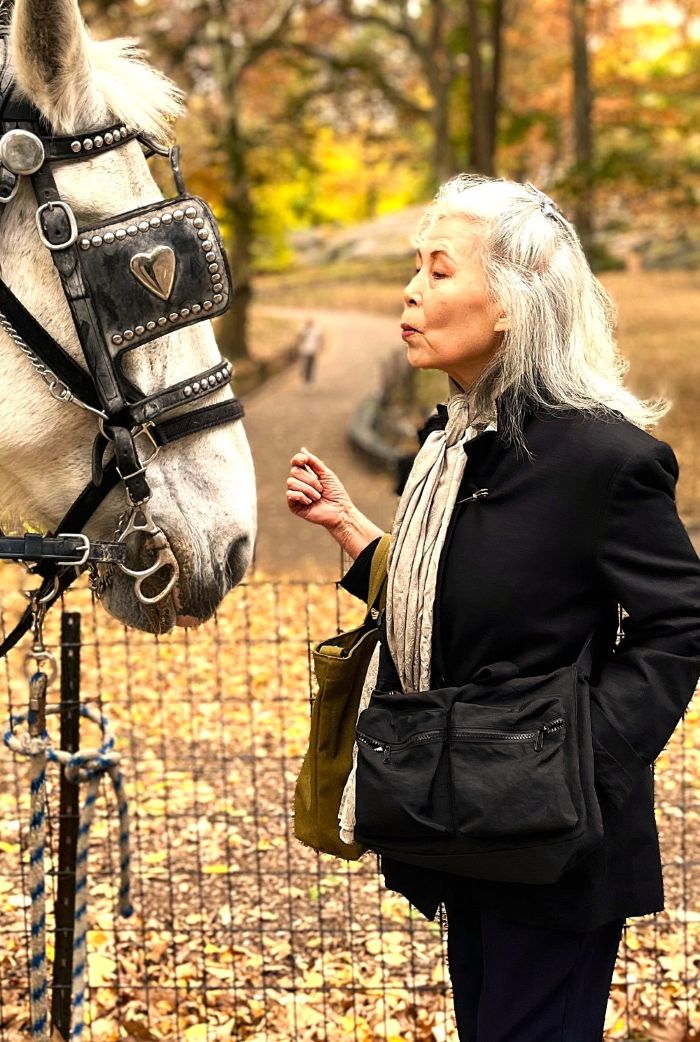 "When our paths crossed as strangers fiction manifested into truth, as if we had met before we met." © Therese Young Kim |
Excerpt from “Nayoung’s Journey,” A Story of Love and Courage
"You see these lines?" asked the matchmaker to Jinju, lifting Nayoung's palm near her chin.
"Yes, I see them," answered Jinju, narrowing her eyes over Nayoung's pale palm.
"This is the side lane that indicates your daughter may go astray."
"Yeh?" Jinju lifted her eyes for the first time with a look of shock.
"What I mean to say is that she may go on a trip one day ... Now, do you see this straight line?" asked the matchmaker.
"I do see it!" said Jinju anxiously.
"It is a sign of longevity!" the matchmaker said emphatically, dropping Nayoung's hand onto the table, which Nayoung gently returned to her lap.
Although the word longevity sounded encouraging, Nayoung wondered what kind of a trip it would be, when the matchmaker opened the book of Goonghap. The woman leafed through it, and appeared again the three deep furrows between her eyebrows. Nayoung and Jinju were glued to the floor like two birds captured in a painting.
The matchmaker directed her sharp eyes toward Jinju. "But what good is a long life without getting married and having a husband to support your daughter and the grandchildren yet to be born! Let's face it, she is a horse-girl, born in the deep hour of night, a wandering wild mare with a mind of her own!"
Jinju bowed down her flustered face, as if she were guilty and responsible for the wandering wild mare sitting next to her.
"But don't despair, Nayoung's Mom, for I can assure you that if a wild mare gets tamed by a stern husband, her devotion and loyalty to him will become incomparable. So, it will be worth your money to let me find that lucky man for your daughter!" The matchmaker closed the book of Goonghap by hitting its cover closed with her palm.
Nayoung felt so humiliated by what the matchmaker said that, later, she couldn't recall how the meeting ended. After Jinju had paid a nominal fee to the fortune-telling matchmaker, they left with no further conversation.
"Dearie, it's just as well it didn't work out, for I didn't like that hard look on her face," said Jinju, breaking the silence when they were walking home, as if it wasn't what the matchmaker had said that had offended her.
Disappointed again, Nayoung didn't say anything, pledging to herself that she would never visit a matchmaker ever again. And yet, reasoned Nayoung, the matchmaker's remarks had a ring of truth, for she did have mind of her own, wondering and dreaming about leaving home, just like a wandering wild mare. Yes, the fortune-telling matchmaker knew who Nayoung was when she had thrown her first flush of a look at her, and Nayoung concluded that the woman was a seer, fortune-teller, matchmaker, and shaman, all combined.
© Therese Young Kim
Posted December 25, 2025
Interpretation of some Korean words in Nayoung's Journey, with images
| Wind-bell | |
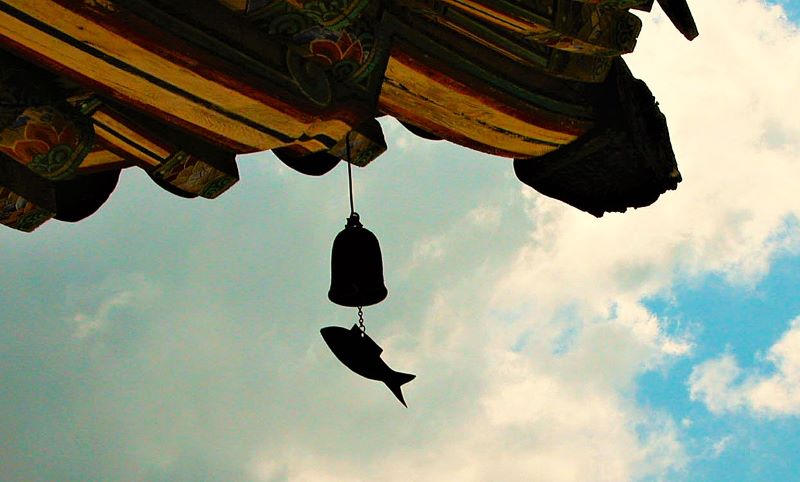 | The Korean wind-bell (poong-gyung 풍경) is a ubiquitous bronze and copper bell hanging from the eaves of Buddhist temples and its clapper has the shape of a fish – the symbol of peace, awakening, and redemption. It chimes in the wind with the soothing sound of ringing. Photo: Wind--bell at Chunggye-Sa Buddhist Temple, |
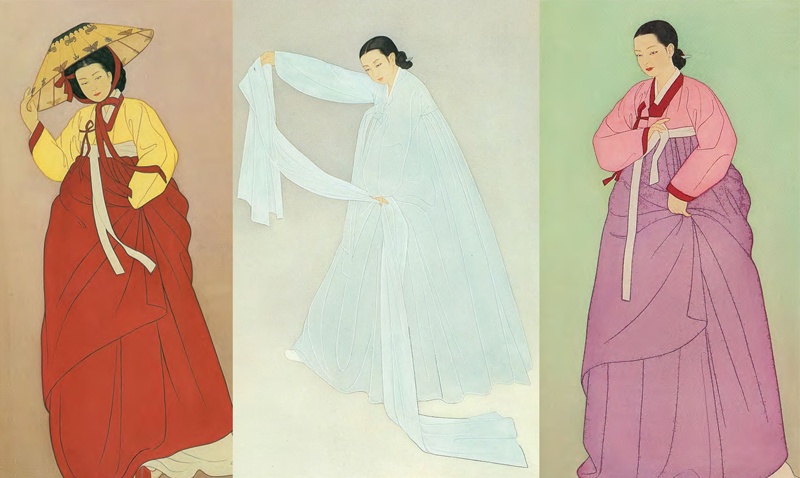
The above images were selected from the book:
“Korean Costumes during the Chosun Dynasty”
Written and Illustrated by Kwon,Oh-Chang
Hyunam Publishing Co.
Written and compiled by © Therese Young Kim The Author of © Nayoung's Journey All Rights Reserved
|
|


